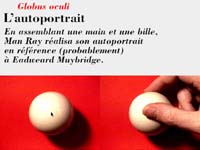
Jean-Louis Boissier, born 1945, professor at Université Paris 8, director of the laboratory Esthétique de l'interactivité. Director and curator of the Biennale Artifices since 1990.
Selected Exhibitions:
Les Immatériaux, Centre Pompidou, 1985; Venice Biennale, 1986; Passages de l'image, Centre Pompidou, 1990; Ars Electronica, 1992; Multimediale 3, Karlsruhe, 1993; Version 1.0, Geneva, 1994; Interactive Media Festival, Los Angeles 1994; ISEA Helsinki, 1994; Interaction '95, Gifu, 1995; Kwangju Biennale, 1995; Biennale de Lyon, 1995; Lab 6, Warshaw, 1997.
Selected Single Exhibitions:
Musée de l'Elysée, Lausanne, 1990; CREDAC, Paris, 1995; ICC, Tokyo, 1995; Le Fresnoy, 1998; Bonn; 1998.
Selected list of Works:
Le Bus, interactive laser disc installation, 1985; Pékin pour mémoire, interactive laser disc installation, 1986; Album sans fin, interactive installation, 1989; Anthologie d'images de synthèse, 1990;
Globus oculi, interactive installation and CD-ROM, 1992; Flora petrinsularis, interactive installation and CD-ROM, 1993-1994; Mutatis mutandis, interactive installation and CD-ROM, 1992; Biennale d'art contemporain de Lyon, CD-ROM, 1995; Actualité du virtuel, CD-ROM, 1997;
La deuxième promenade, interactive installation, 1998; Moments de Jean-Jacques Rousseau, CD-ROM, 1999.
Statement about the work
The program studies the logical and ambiguous relationship between the eye and the hand, between sight and touch, between the visible and the tangible; the rotating trackball, which moves the screen's cursor, imitates the movements of an eyeball and is the only element of action in the installation and CD-ROM.
Globus Oculi begins with the following 10 title menu: The Eye, Tickles, The Finger, The Reel, The Corset ribbon, The Detail, Bamboo, The Bather, Annunciation, Self-portrait.
The whole installation conveys the idea of an interactive album, a sort of didactic manual of interactivity of infant stage, it enables the viewer to experience the poetry of interactivity. The main theme lies in the different ways of designating something, be it the finger which points, the eye which focuses or words which describe; within this are sub themes such as learning, the discovery of the world, the mother-child relationship or the beginnings of an art. The metaphor is created by mixing pictures and sounds recorded from real life with minimalistic software, interfacing and texts. The viewer's desire to see is simulated and is therefore inevitably disappointed; in compensation for this is the pleasure of the moment, of repeated access to the pictures and to the internal permutations and of the power of possession over those images and perhaps also by the idea of gesture being transposed to a second degree as an image (similar to Freud's Fort Da observations).
